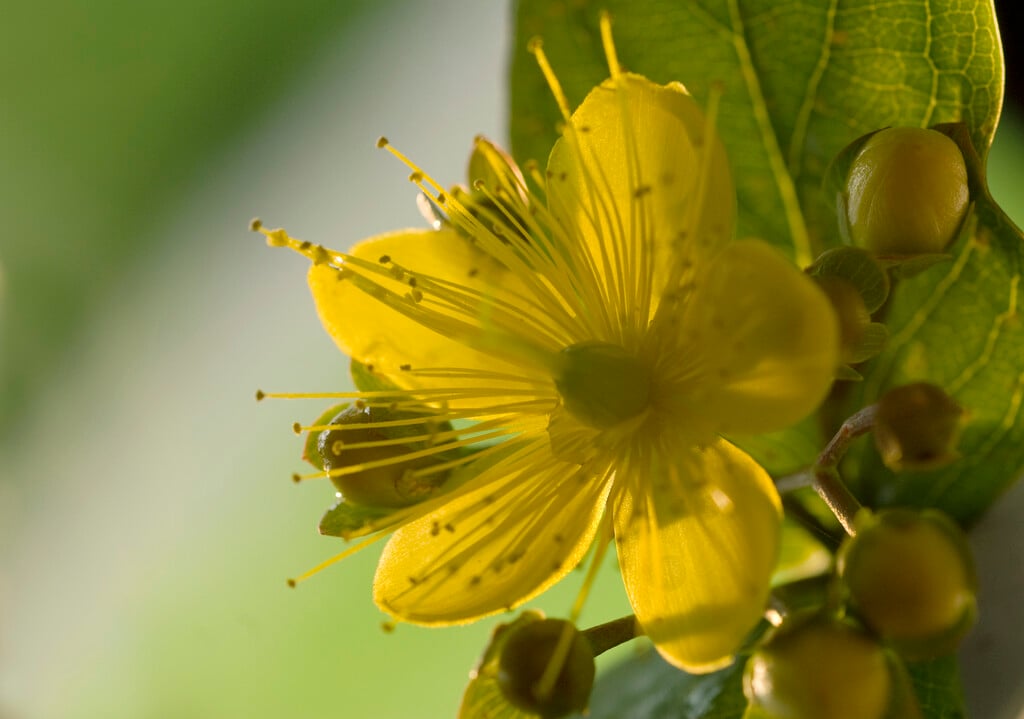Hypericum perforatum
perforate St John's wort
A clump-forming, upright perennial to about 1m tall, the small, narrow oval mid-green leaves with translucent dots that give the appearance of perforations, and broad, pyramid-shaped terminal clusters of star-shaped yellow flowers to 2cm across, in summer
Other common names
cammockcommon St John's wort
see moredevil chaser
devil's flight
devil's scourge
God's wonder plant
herb John
human blood
Klamath weed
penny John
rosin rose
St Columba's flower
Synonyms
Hypericum lineolatumSize
Ultimate height
1–1.5 metresTime to ultimate height
2–5 yearsUltimate spread
0.5–1 metresGrowing conditions
Moisture
Moist but well–drainedpH
Acid, Alkaline, NeutralColour & scent
| Stem | Flower | Foliage | Fruit | |
| Spring | Green | |||
|---|---|---|---|---|
| Summer | Yellow | Green | ||
| Autumn | Green | |||
| Winter |
Position
- Full sun
- Partial shade
Aspect
South–facing or West–facing or East–facing
Exposure
Exposed or Sheltered Hardiness
H6Botanical details
- Family
- Hypericaceae
- Native to GB / Ireland
- Yes
- Foliage
- Deciduous
- Habit
- Clump forming
- Potentially harmful
- Fruit are ornamental - not to be eaten. Wear gloves and other protective equipment when handling. Pets: Fruit are ornamental - not to be eaten - see the HTA guide to potentially harmful plants for further information and useful contact numbers
- Genus
Hypericum can be annuals, perennials, shrubs or trees, evergreen or deciduous, with usually paired leaves and showy yellow flowers with prominent stamens, followed by capsules, occasionally berry-like
- Name status
Correct
- Plant range
- Europe, N Africa, SW Asia
How to grow
Cultivation
Grows well in moist but well-drained soil in full sun or part shade. Ideal for wildflower garden, wild garden or informal borders
Propagation
Suggested planting locations and garden types
- Cottage and informal garden
- Wildflower meadow
- Wildlife gardens
- Flower borders and beds
Pruning
No pruning required other than a tidy before spring growth commences
Pests
Generally pest-free
Diseases
May be susceptible to honey fungus (rarely)
Love gardening
Sign up to receive regular gardening tips, inspiration, offers and more
View our Privacy Policy
Get involved
The Royal Horticultural Society is the UK’s leading gardening charity. We aim to enrich everyone’s life through plants, and make the UK a greener and more beautiful place.

